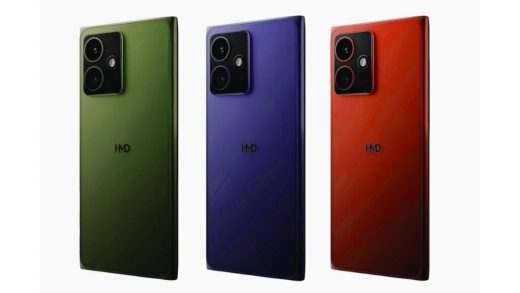
Xiaomi Wireless AR Glass Discovery Edition, the company’s latest augmented reality (AR) wearable device, was unveiled at the Mobile World Congress (MWC) 2023 at Barcelona. These AR glasses are a prototype of the company’s latest innovation in AR and VR technology and is powered by Qualcomm’s most recent XR platforms. It is equipped with advanced “retina-level” display that is designed to connect to a smartphone wirelessly, and is claimed to offer latency as low as 50ms.
According to the company, the new Xiaomi Wireless AR Glass Discovery Edition are built with lightweight materials including magnesium-lithium alloy and carbon fibre parts. The glasses also pack a silicon-oxygen anode battery, and Xiaomi says they weigh only 126g. They are equipped with Qualcomm’s Snapdragon XR2 Gen 1 platform and applications can use the Snapdragon Spaces XR development platform to offer various features.
Boasting a retina-level near-eye display for AR glasses, Xiaomi Wireless AR Glass Discovery Edition delivers a truly immersive visual experience. Moreover, our self-developed Xiaomi AR Gesture Control empowers effortless control between virtual and real space. pic.twitter.com/EipqBWxkpW
— Lei Jun (@leijun) February 27, 2023
Xiaomi says its wireless AR glasses are among the industry’s first to achieve a “retina-level” display. The company says that when the angular resolution (or pixels per degree/ PPD) of a display is 60, pixels become indistinguishable to the human eye. According to the company, the Xiaomi Wireless AR Glass Discovery Edition has a PPD of 58.
The AR glasses from Xiaomi are equipped with two Micro-OLED displays with a peak brightness of 1,200 nits that feature free-form light-guiding prisms. The final image is shown in front of the wearer’s eyes, after being reflected by three surfaces within the prisms, Xiaomi explains, adding that it has equipped the glasses with electrochromic lenses that can display a “blackout mode” for VR-like experiences.
As per details shared by Xiaomi, the new wireless AR glasses are equipped with a low power AON camera. This allows it to support gesture interaction for prolonged periods. However, users can rely on their smartphone for controls — these will be used in the form of a gesture, or touchpad controls.
These AR glasses support micro gesture interaction for one-handed gesture control using the inner area of the wearer’s fingers. Using the second joint of the middle finger, users can use the second joint of their index finger for the “up” control, while surrounding areas will control the other directional controls. Users can also slide their thumb on their index finger to enter and exit applications.
In terms of connectivity, the Xiaomi Wireless AR Glass Discovery Edition offer seamless wireless connections to the Xiaomi 13 series handsets that have made their debut in global markets. The company says that users will see latency as low as 50ms with full link latency, while the company’s proprietary low latency communication link brings the latency down to 3ms.
These wireless glasses will also work with Snapdragon Spaces-ready smartphones. It is worth noting that the OnePlus 11 5G, which was recently launched in India, is claimed to be the company’s first Snapdragon Spaces-ready phone to be powered by the Snapdragon 8 Gen 2 SoC.
For details of the latest launches and news from Samsung, Xiaomi, Realme, OnePlus, Oppo and other companies at the Mobile World Congress in Barcelona, visit our MWC 2023 hub.
Featured video of the day
Torture Testing Gorilla Glass Victus 2




